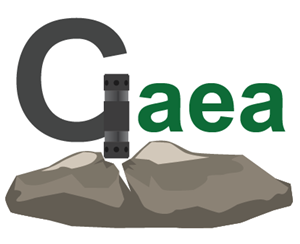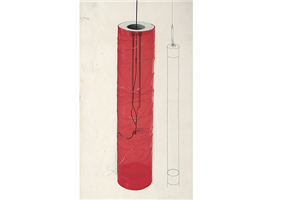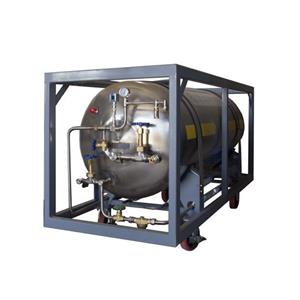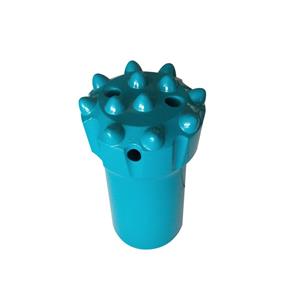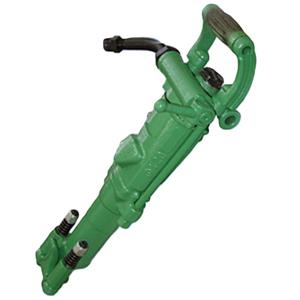Main Steps in Orebody Mining: What Do Orebody Development, Preparation, Cutting, and Stoping Mean
Orebody mining is a complex and technology-intensive engineering activity that involves multiple steps and meticulous planning. Its goal is to efficiently and safely convert underground mineral resources into usable mineral products. This article provides a detailed analysis of the main steps in orebody mining—orebody development, preparation, cutting, and stoping—and explains the relationships between them.
I. Orebody Development
First, let's explain orebody development. Orebody development involves excavating a series of tunnels from the surface to connect to the orebody and link it to the surface, forming systems for personnel access, ventilation, transportation, drainage, power supply, air supply, and water supply. It serves two key functions: first, to establish a series of engineering works that reach the orebody and create connections between the orebody and the surface; second, to form the basic underground mining systems, including pathways for personnel, transportation, drainage, power, air, and water supply.
In terms of the objectives of development, we can divide it into three parts. First, we need to transport the mined ore and waste rock from underground to the surface—this is the most fundamental requirement, with the aim of bringing underground ore to the surface. Second, we must discharge wastewater and polluted air to the surface to ensure a suitable working environment for underground operations.
The third part involves development tunnels. These tunnels are excavated to achieve the above development objectives, namely establishing connections with the orebody and forming systems for personnel movement, ventilation, transportation, drainage, power, air, and water supply. This series of guiding tunnels is referred to as development guides. So, what do development tunnels primarily include? For example, they encompass shafts, adits, shaft-bottom yards, main ore chutes and filling shafts, as well as level transport tunnels. All of these are collectively known as development guides.
Summary:
The first step in orebody mining is orebody development, which establishes a network of tunnels from the surface to the orebody, ensuring the ingress and egress of personnel, equipment, and materials, as well as the transportation of ore and waste rock. Development engineering not only involves tunnel excavation but also the construction of ventilation, drainage, power, air, and water supply systems, laying the foundation for subsequent mining operations. Development tunnels come in various types, such as shafts, adits, shaft-bottom yards, main ore chutes, main raises, and level transport tunnels, which together form the so-called development guide system. Through these tunnels, ore can be lifted to the surface while ensuring suitable underground working conditions, such as the supply of fresh air and effective wastewater discharge.

II. Orebody Preparation
What is the definition of preparation? Once the orebody has been developed, we need to delineate key areas. This part is called orebody preparation. It has two purposes: first, to divide the level into blocks as independent stoping units; second, to further subdivide the level into blocks, treating these as independent stoping units, and creating conditions within the orebody for personnel access, rock drilling, ore drawing, ventilation, and more. We can imagine that the development mentioned earlier creates the basic conditions for mining the orebody. Preparation, building on development, further divides it into independent stoping units and provides conditions for personnel access and ventilation in these units. The tasks of preparation also fall into two main categories: the first is to subdivide the level into blocks as independent stoping units; the second is to create conditions for stoping, including pathways for personnel, ventilation, rock drilling, and connections.
Compared to development tunnels, what are preparation tunnels? Preparation tunnels are a means of completing preparation tasks by excavating a series of tunnels. These tunnels are known as preparation tunnels. In the diagram on the right, the main features of preparation tunnels include personnel and ventilation raises, as well as connecting tunnels—these are characteristics of preparation tunnels. When evaluating mining economic indicators, two metrics related to preparation are involved: the preparation ratio and the preparation work proportion.
The preparation ratio refers to the meters of preparation and cutting tunnels required per thousand tons of ore extracted from the block. The preparation work proportion, on the other hand, is the ratio of the ore quantity extracted from preparation and cutting tunnels in the block to the total ore extracted from the block. Unlike the preparation ratio, which only considers the length of constructed preparation and cutting tunnels divided by the total ore output to obtain the ratio, the preparation work proportion refines this by calculating the proportion of ore extracted from preparation and cutting tunnel excavation to the block's total ore output.
The preparation ratio only reflects the length of preparation and cutting tunnels in the block, without considering the impact of tunnel cross-sectional size or volume. The preparation work proportion, however, only reflects the proportion of in-vein preparation and cutting tunnels arranged within the orebody, without accounting for the workload of out-of-vein preparation and cutting tunnels. This is the difference between them.
Summary:
After orebody development is completed, the process moves to orebody preparation. The purpose of this stage is to further subdivide the mining area into manageable and extractable small units—namely blocks—through detailed planning on the developed orebody. Preparation work not only involves tunnel excavation but also the creation of necessary conditions inside the blocks for personnel access, rock drilling, ore drawing, and ventilation. Preparation tunnels, also known as fiscal tunnels, must consider the layout of personnel and ventilation raises as well as connecting tunnels to create a favorable working environment for subsequent mining operations. The preparation ratio and preparation work proportion are two key indicators for evaluating preparation efficiency, measuring the economic aspects of tunnel construction and the proportion of ore produced within tunnels, respectively, providing quantitative bases for optimizing preparation strategies.
III. Cutting
The third part is about cutting work. So, what is the definition of cutting? Cutting work builds on preparation and, on the already prepared ground, creates free faces and free spaces for large-scale ore extraction. From this definition, we can understand that it aims to create free faces and free spaces for stoping. Its purpose is to generate these free faces and spaces.
Cutting work mainly includes two aspects: how to form free faces and free spaces. First, by excavating cutting tunnels, free faces and free spaces can be formed. Additionally, based on cutting tunnels, further work is done to expand the free faces, providing more free space for stoping. Cutting tunnels primarily consist of two parts: undercutting tunnels (undercutting drifts and crosscuts) and cutting raises. To further expand the free faces, undercutting, funneling, and slotting operations are also required. This encompasses the entire content of cutting work. Development, preparation, and cutting are all preparations for stoping.
Summary:
Cutting is the step that follows preparation, aimed at creating the necessary free faces and spaces for large-scale stoping. This step involves excavating specific tunnels, such as undercutting tunnels and cutting raises, to provide space for ore blasting and loosening. The design of cutting tunnels must account for the physical properties of the ore, the orebody structure, and mining techniques to ensure efficient implementation of stoping operations. Additionally, operations like undercutting, funneling, and slotting are performed to further expand free spaces, facilitating stoping activities.

IV. Stoping
Stoping refers to the process of conducting large-scale mining work after cutting is completed. Typically, large-scale mining work is called stoping, which is subdivided into three main steps: ore breaking, ore handling, and ground pressure management. First, let's explain the definition of ore breaking: using the cutting space as a free face and employing rock drilling and blasting methods. Ore breaking is usually divided into four categories based on orebody occurrence conditions, the mining method adopted, and the rock drilling equipment: shallow-hole breaking, medium-deep hole breaking, deep-hole breaking, and chamber blasting.
Ore handling refers to the work of moving blasted ore within the block to transport tunnels and loading it into mine cars. Handling is limited to within the mine, meaning moving ore to transport tunnels, while transportation refers to the process of lifting ore from transport tunnels to the surface.
There are two main methods of ore handling: gravity handling and mechanical handling. Gravity handling primarily uses ordinary funnel ore drawing for gravity movement. Mechanical handling employs equipment like electric rakes, loaders, scrapers, trucks, and belt conveyors for assisted handling.
When selecting ore transportation methods, considerations include the mining method and orebody conditions. For example, steeply inclined orebodies are more suitable for gravity handling, while gently inclined or near-horizontal orebodies are better suited for mechanical handling.
The third aspect is ground pressure management. Ground pressure refers to the phenomenon where, after ore extraction, the goaf (mined-out area) forms underground, and over time, the pillars and surrounding rock in the hanging wall and footwall deform, fail, or collapse. Ground pressure management involves work necessary to prevent or control deformation, failure, and collapse of the surrounding rock. It includes eliminating the adverse effects of ground pressure and ensuring production safety, collectively known as ground pressure management work.
Based on current ground pressure management methods, it can be divided into three parts: first, using retained pillars to support the goaf for management; second, managing through caving of the surrounding rock; and finally, filling the goaf with backfill materials for management.
Summary:
Stoping is the core phase of orebody mining, encompassing three major steps: ore breaking, ore handling, and ground pressure management. Ore breaking is performed via rock drilling and blasting in the cutting space, with appropriate drilling depths and methods selected based on orebody conditions. Ore handling involves moving blasted ore to transport tunnels and loading it for transport, distinguishing between gravity and mechanical methods, with selections based on factors like orebody inclination. Ground pressure management is key to ensuring mining safety, requiring measures to prevent and control deformation, failure, and collapse in the goaf, thereby maintaining stable ongoing extraction operations.
V. Relationships Between the Steps
The four steps in orebody mining are closely interconnected in time and space, unfolding sequentially to form a mutually supportive and progressive chain of operations. Development provides the infrastructure for preparation, preparation refines the mining area, cutting creates conditions for stoping, and ultimately, stoping achieves ore extraction. The implementation of each step must consider the needs of subsequent operations, embodying the mining principle of "balanced mining and development, with development leading the way."
VI. Conclusion
In summary, orebody mining is a systematic engineering process composed of multiple continuous and interdependent stages, where the successful execution of each step relies on prior preparation and thorough planning. With technological advancements and the demands of sustainable development, modern mining increasingly emphasizes a balance between environmental protection, safety, and economic efficiency. It continuously explores and applies new technologies to improve extraction efficiency and reduce environmental impact. In the future, orebody mining will become more intelligent and eco-friendly, advancing toward higher levels of refined management.
